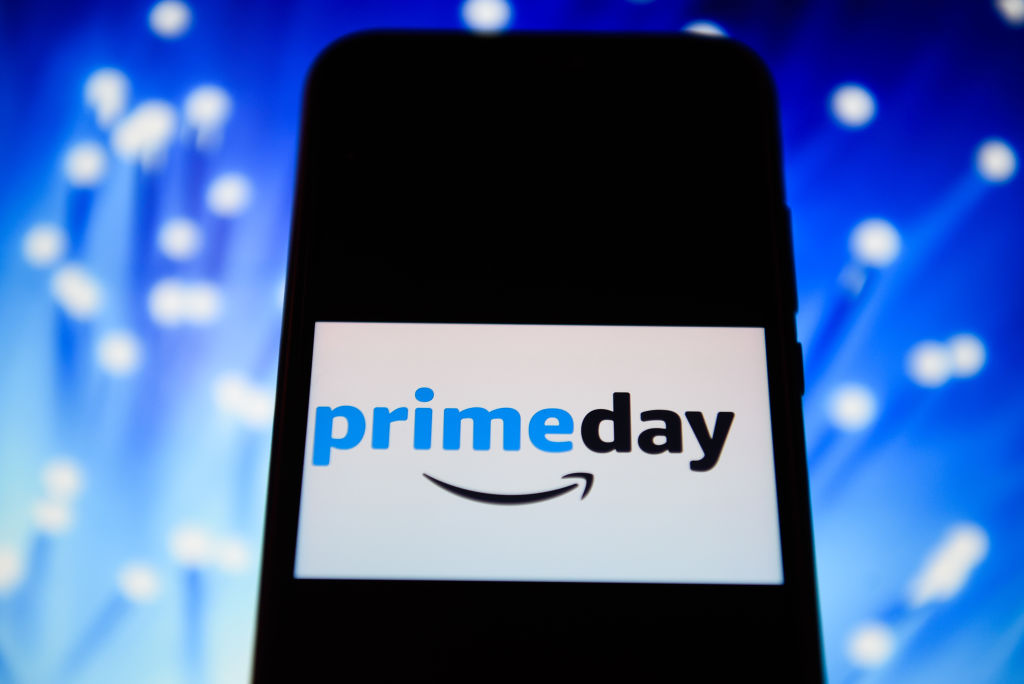Ordering From Etsy or Amazon? A Guide to Third-Party Sellers
Follow these tips to help make sure your shopping experiences go smoothly.

I’m an avid online shopper, but last year I had an online shopping first: I made several purchases through third-party sellers on Etsy.com and Amazon.com. My experience, however, was rather frustrating. Looking back, I partly blame myself. My issues ultimately were resolved, and I received full refunds, but had I done my homework first I probably could’ve avoided the problems altogether.
See Our Slide Show: Worst Things to Buy on Amazon
Here are five things you should keep in mind before buying from a third-party seller on Amazon or Etsy:
1. Past customers can be your best guide
Do some research on a third-party seller before you commit to a purchase. Start by checking the seller’s customer ratings and reviews via their store page. “Read through the kinds of experiences other people have had interacting with these stores, because the reality is you'll have to deal with them directly, not Amazon or Etsy [if your transaction goes awry],” says Seth Barnes, head of marketing for Savings.com, a coupons and deals Web site.
From just $107.88 $24.99 for Kiplinger Personal Finance
Become a smarter, better informed investor. Subscribe from just $107.88 $24.99, plus get up to 4 Special Issues

Sign up for Kiplinger’s Free Newsletters
Profit and prosper with the best of expert advice on investing, taxes, retirement, personal finance and more - straight to your e-mail.
Profit and prosper with the best of expert advice - straight to your e-mail.
When using Amazon, for example, customers should look for sellers with detailed product information on their listing pages, as well as clear information on shipping options and costs so there aren’t any surprises, says Erik Farleigh, a spokesman for Amazon. You can tell whether an item is being offered by a third-party seller on Amazon by checking the “sold by” and “fulfilled by” fields on a product page. Products that aren’t fulfilled by Amazon typically only list the “sold by” information on the product page. All items on Etsy are sold by third parties.
2. There’s no such thing as a standard shipping policy
One of the biggest issues I had was dealing with a seller who had listed on its storefront page that its items shipped from New York, when in fact they shipped from China. Needless to say, my order took much longer to arrive than expected. Instead of four to seven days, it took two weeks.
To help avoid this type of inconvenience, contact the seller directly before you buy. Ask upfront where its products ship from. On Etsy, you can narrow down your store options to sellers who are located near you by using the Etsy Local function. This is helpful if you’re in a time crunch and need to boost the odds of a product arriving by a certain date.
3. Amazon Prime membership doesn’t guarantee free shipping
Free two-day shipping on purchases is one of the biggest draws of a $99-a-year Amazon Prime membership. However, what some members may not realize is that only items sold by Amazon (as well as many items fulfilled by Amazon) qualify for that option. Look for the Prime logo. Products sold and fulfilled by third parties do not qualify for Prime shipping and should display this note: “Not eligible for Amazon Prime.”
In addition, according to Amazon policy, comingling purchases isn’t a loophole. If you place an order that contains some items that are eligible for free Prime shipping and some that aren’t, you’ll be charged shipping fees for the ineligible items.
4. Returns are at a seller’s discretion
When dealing with major retailers, there’s comfort in knowing that if you don’t like a purchase, you can always exchange it or get a refund. Sure, some return policies are more generous than others, but these retailers offer some form of recourse for unwanted items.
That’s not always the case when you buy an item online through a third-party seller. On both Amazon and Etsy, third-party sellers set their own return, refund and exchange policies. It’s important to read a seller’s return policy in its entirety before making a purchase.
5. You’ll need to try to settle disputes yourself
Because neither Amazon nor Etsy has direct access to order information for transactions sold and fulfilled by third-party sellers, they encourage customers to work through any issues directly with the seller before they’ll step in. A dispute could be something like requesting a refund from a seller with a no-returns policy for an item that looks drastically different in person than it did online.
This process can be time-consuming, especially if you’re dealing with an international seller. As I mentioned, one of the sellers I bought from was overseas. It took hours to get responses to my inquiries, largely due to the time difference. I’d send a message in the morning and get a reply back at midnight. Be sure to document correspondence with a third-party seller just in case you have to escalate the situation to customer service at Amazon or Etsy.
Profit and prosper with the best of Kiplinger's advice on investing, taxes, retirement, personal finance and much more. Delivered daily. Enter your email in the box and click Sign Me Up.

Browne Taylor joined Kiplinger in 2011 and was a channel editor for Kiplinger.com covering living and family finance topics. She previously worked at the Washington Post as a Web producer in the Style section and prior to that covered the Jobs, Cars and Real Estate sections. She earned a BA in journalism from Howard University in Washington, D.C. She is Director of Member Services, at the National Association of Home Builders.
-
 I'm want to give my 3 grandkids $5K each for Christmas.
I'm want to give my 3 grandkids $5K each for Christmas.You're comfortably retired and want to give your grandkids a big Christmas check, but their parents are worried they might spend it all. We ask the pros for help.
-
 If You're Not Doing Roth Conversions, You Need to Read This
If You're Not Doing Roth Conversions, You Need to Read ThisRoth conversions and other Roth strategies can be complex, but don't dismiss these tax planning tools outright. They could really work for you and your heirs.
-
 Could Traditional Retirement Expectations Be Killing Us?
Could Traditional Retirement Expectations Be Killing Us?A retirement psychologist makes the case: A fulfilling retirement begins with a blueprint for living, rather than simply the accumulation of a large nest egg.
-
 21 Last-Minute Gifts for Grandparents Day 2025 to Give Right Now
21 Last-Minute Gifts for Grandparents Day 2025 to Give Right NowHoliday Tips Last-minute gifting is never easy. But here are some ideas to celebrate Grandparents Day.
-
 Texas Sales Tax-Free Weekend 2025
Texas Sales Tax-Free Weekend 2025Tax Holiday Here's what you needed to know about the Texas sales tax holiday.
-
 Alabama Tax-Free Weekend 2025
Alabama Tax-Free Weekend 2025Tax Holiday Here’s everything you need to know about the 2025 back-to-school Alabama sales tax holiday.
-
 The Sweet 23: States Where Twix and Kit Kat Avoid the ‘Candy Tax’
The Sweet 23: States Where Twix and Kit Kat Avoid the ‘Candy Tax’State Taxes There’s something spooky this Halloween, and it’s not just the ghouls. Find out if your state’s sales tax takes a bite out of sweet savings.
-
 Florida Back-to-School Tax-Free Holiday 2025
Florida Back-to-School Tax-Free Holiday 2025Sales Taxes The new tax-free holiday in Florida brought month-long savings on computers, clothing and other school supplies.
-
 Five Reasons You Shouldn't Shop Amazon's Prime Big Deal Days
Five Reasons You Shouldn't Shop Amazon's Prime Big Deal DaysSmart Buying Are Amazon Prime Big Deal Days still a good deal? We'll break it down.
-
 Five Ways to Save on Vacation Rental Properties
Five Ways to Save on Vacation Rental PropertiesTravel Use these strategies to pay less for an apartment, condo or house when you travel.
-
 How to Avoid Annoying Hotel Fees: Per Person, Parking and More
How to Avoid Annoying Hotel Fees: Per Person, Parking and MoreTravel Here's how to avoid extra charges and make sure you don't get stuck paying for amenities that you don't use.